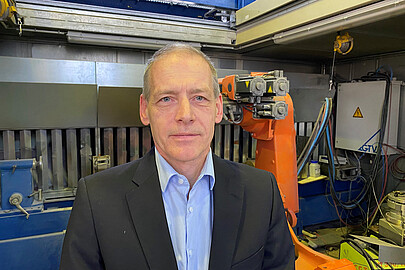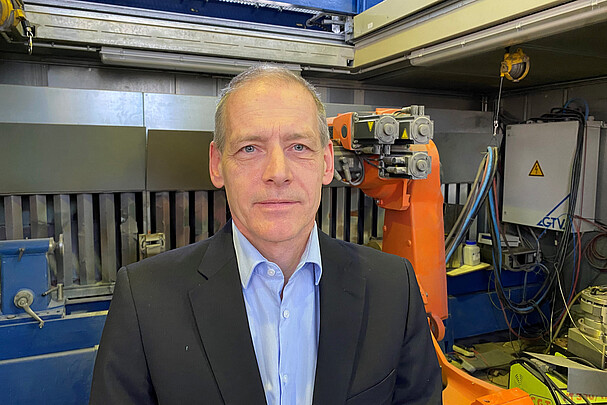CURRENT RESEARCH WORK:
- Development of TLP solders for soldering copper and steel materials at 750 to 850°C
- Development of a solder-nitriding hybrid process in a continuous furnace for the mass production of water-cooled bipolar plates made from chrome-plated materials
- Silane-doped process gases for the generation of vacuum-equivalent process conditions in protective gas continuous furnaces
- Clarification of the mechanisms for surface activation during flux-free brazing of high-alloy steel materials under inert gas and in a vacuum
- Influence of soldering process atmosphere and process time on the fatigue strength of high-temperature brazed CrNi steel joints
- Development of a continuous protective gas furnace process with heat recovery
Attachments:
- Inert gas continuous furnace from Kohnle for process temperatures up to 1200 °C in N2/H2/Ar atmosphere with/without silane mixing
- High vacuum furnace with rapid cooling from PVA for process temperatures up to 1250°C
- Sliding table flame brazing system with 6 burners from Everwand & Fell
- Test system for induction brazing under shielding gas with variable shielding gas admixture for operation with/without silane-containing process gases
- Various batch furnaces for heat treatment in air or in shielding gas
System descriptions for soldering technology
Conveyor Belt Protective Gas Continuous Furnace
The institute has a continuous inert gas furnace at its Witten site. This is a conveyor belt furnace of the type HTE 1200-200/80-1500 (Kohnle, Birkenfeld), which can be operated under various process gases (argon, hydrogen, nitrogen). In addition, the dosed addition of special gases such as monosilane is possible via an additional gas channel. The heating speed and target temperature of the components in this soldering process are determined by the selected belt speed and the furnace temperatures set in the three heating zones of the annealing area.
Tube furnace
For laboratory tests under variable process gas conditions, the IW operates a tube furnace with quartz glass muffle, automated gas mixing device and furnace control at the Witten site. Heat treatments up to 1100°C can also be carried out in this furnace under reactive process gases.
High vacuum furnace
The institute has a MOV 243T high vacuum furnace (PVA Vakuum Anlagenbau GmbH) for heat treatments in a vacuum. This is an all-metal cold-wall furnace with molybdenum heating elements, which can be operated at a base pressure of 10-6 mbar up to a temperature of 1250 °C. The vacuum furnace is equipped with a rapid cooling system that enables forced convective cooling of the furnace charge with argon after heat treatment is complete.
Flame brazing stand
The flame soldering process is a fast atmospheric soldering process using localised heating. The automatic flame soldering machine operated at the institute consists of a PLC-controlled 6-flame torch unit with an integrated, pneumatically controlled sliding table as a workpiece carrier. It is suitable for brazing bulky components, for the production of very small series or for the manufacture of prototypes under near-series conditions. Components made of aluminium, copper alloys, brass and stainless steel can be joined. Depending on the application, a decision is made as to whether a soft soldering process (temperature < 450 °C) or a hard soldering process is carried out.
Induction brazing system
Induction brazing tests are carried out in a self-built laboratory system. The test system is suitable for induction brazing under shielding gas and is equipped with a variable shielding gas admixture for operation with/without silane-containing process gases. The components are heated with a water-cooled inductor, which is operated by means of an RF generator with an adjustable frequency range between 50 and 450 kHz and a maximum output of 3000 W (i-class 1.5/3 kW, Cobes GmbH, Weisweil, Germany).
CONTACT TO JOINTING TECHNOLOGY - SOLDERING AND THERMAL PROCESSING TECHNOLOGY


58453 Witten


58453 Witten























